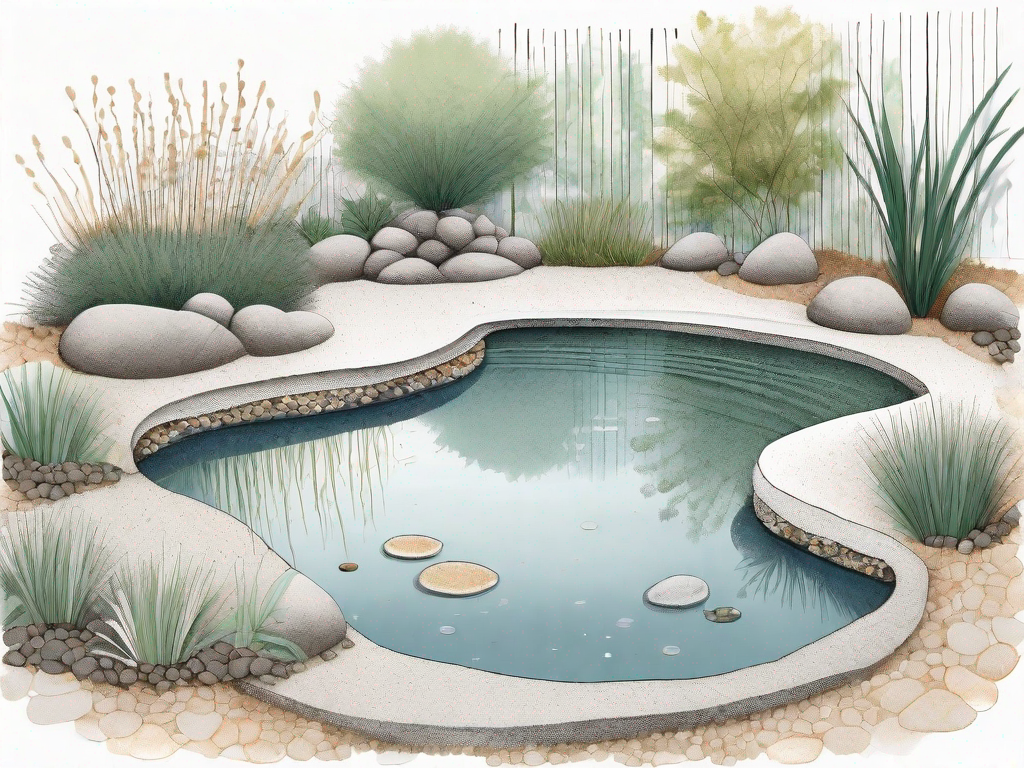Using Fine Aggregate for Backyard Pond Edging
Published on: April 1, 2024
Get an estimate for your project in 60 seconds

When it comes to landscaping, the use of fine aggregate has become increasingly popular due to its versatility and aesthetic appeal. One particular application that has gained attention is the use of fine aggregate for backyard pond edging. This article will delve into the specifics of using fine aggregate for this purpose, including its benefits, the process involved, and the best types of fine aggregate to use.
Understanding Fine Aggregate
Fine aggregate, often referred to as sand, is a type of aggregate that is characterized by its small particle size, usually less than 5mm in diameter. It is commonly used in construction and landscaping due to its ability to compact well and provide a smooth, even surface.
There are various types of fine aggregate available, each with its own unique properties and uses. Some of the most common types include natural sand, crushed stone sand, and crushed gravel sand. The choice of fine aggregate will depend on the specific requirements of your project.
Choosing the Right Fine Aggregate
When it comes to choosing the right fine aggregate for your backyard pond edging, there are a few factors to consider. First, you need to consider the aesthetic appeal of the aggregate. You want to choose a type that complements the overall design and color scheme of your backyard.
Second, you need to consider the durability of the aggregate. Backyard pond edging is exposed to various elements, including water, sunlight, and foot traffic. Therefore, it is crucial to choose a type of fine aggregate that can withstand these conditions.
Lastly, you need to consider the cost of the aggregate. While some types of fine aggregate may be more expensive than others, it is important to remember that the longevity and aesthetic appeal of the aggregate can offset the initial cost.
Benefits of Using Fine Aggregate for Pond Edging
There are several benefits to using fine aggregate for your backyard pond edging. One of the main benefits is its aesthetic appeal. Fine aggregate comes in a variety of colors and textures, allowing you to create a unique and visually appealing edge for your pond.
Another benefit of using fine aggregate is its durability. When properly installed, fine aggregate can withstand various weather conditions and foot traffic, making it a long-lasting option for pond edging.
Finally, fine aggregate is easy to install and maintain. With the right tools and materials, you can easily create a beautiful and durable edge for your pond. Additionally, fine aggregate requires minimal maintenance, making it a convenient choice for homeowners.
Where to Buy Fine Aggregate
If you’re looking to buy fine aggregate for your backyard pond edging project, consider Hello Gravel. They offer a wide range of high-quality aggregates, including fine aggregate, at competitive prices.
With Hello Gravel, you can be assured of the quality and durability of the aggregate. They source their products from reliable suppliers and conduct thorough quality checks to ensure that you get the best value for your money.
Furthermore, Hello Gravel offers convenient delivery options, making it easy for you to get the aggregate you need for your project. Whether you need a small amount for a DIY project or a large quantity for a professional landscaping project, Hello Gravel has got you covered.
How to Use Fine Aggregate for Pond Edging
Using fine aggregate for pond edging is a relatively straightforward process. However, it does require some planning and preparation to ensure a successful installation. Here is a step-by-step guide on how to use fine aggregate for pond edging:
- Prepare the Area: The first step is to prepare the area where you will be installing the aggregate. This involves clearing any debris, leveling the ground, and marking the area where the aggregate will be installed.
- Install the Edging: Next, you need to install the edging that will hold the aggregate in place. This can be done using various materials, such as plastic or metal edging.
- Fill with Aggregate: Once the edging is in place, you can begin filling it with the fine aggregate. Be sure to compact the aggregate as you go to ensure a smooth and even surface.
- Finish and Maintain: After the aggregate has been installed, you can finish the project by adding any additional landscaping elements, such as plants or rocks. To maintain the aggregate, simply rake it periodically to keep it looking fresh and clean.
If you need a quote for your project, you can fill out the quote form on the Hello Gravel website. They will provide you with a detailed estimate based on your specific needs and requirements.
Conclusion
In conclusion, fine aggregate is a versatile and durable material that can be used for a variety of landscaping projects, including backyard pond edging. With its aesthetic appeal, durability, and ease of installation, it is a great choice for homeowners looking to enhance the beauty and functionality of their backyard.
Whether you’re a DIY enthusiast or a professional landscaper, fine aggregate offers a cost-effective and practical solution for your pond edging needs. So why wait? Start planning your backyard pond edging project with fine aggregate today!
Start Your Backyard Pond Project with Hello Gravel
Ready to transform your backyard with a stunning pond edged by the finest aggregates? Look no further than Hello Gravel, your nationwide provider of top-quality materials. Experience our white-glove service and let us handle the heavy lifting. Simply visit our website, request a quote or place your order, and we’ll deliver everything you need right to your doorstep. From small driveways to large civil projects, we’ve got you covered. Check out our products today and take the first step towards a beautiful backyard oasis.
Author: alan